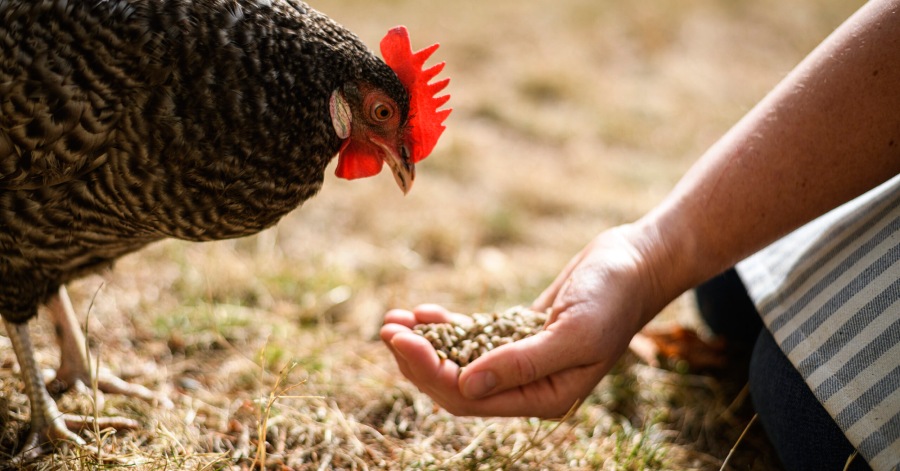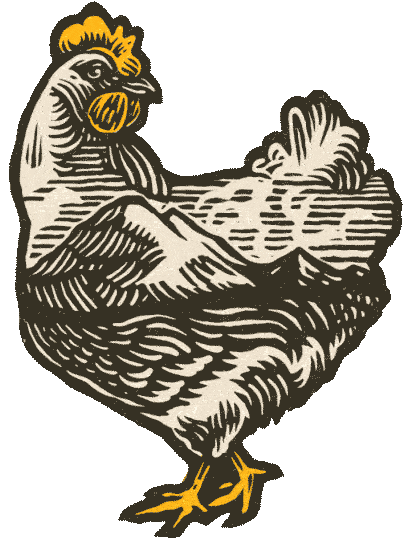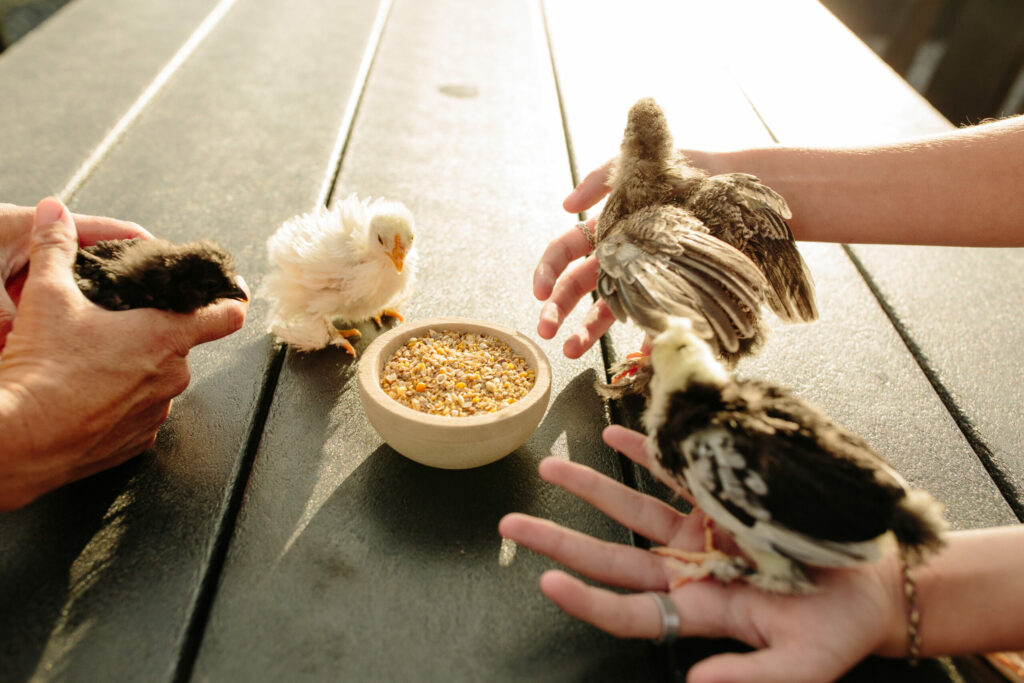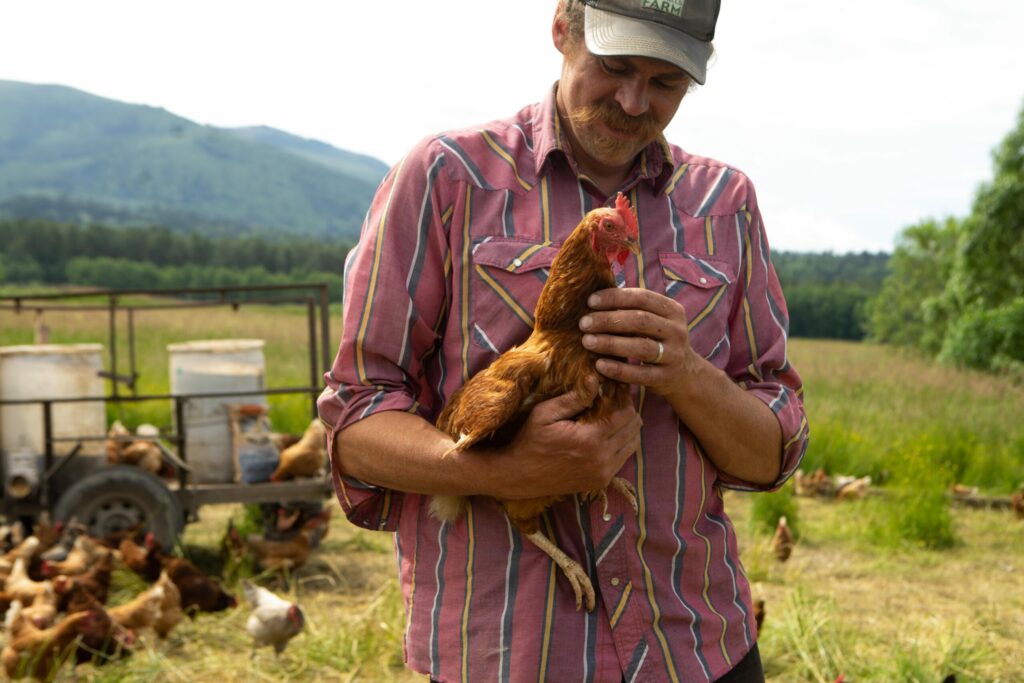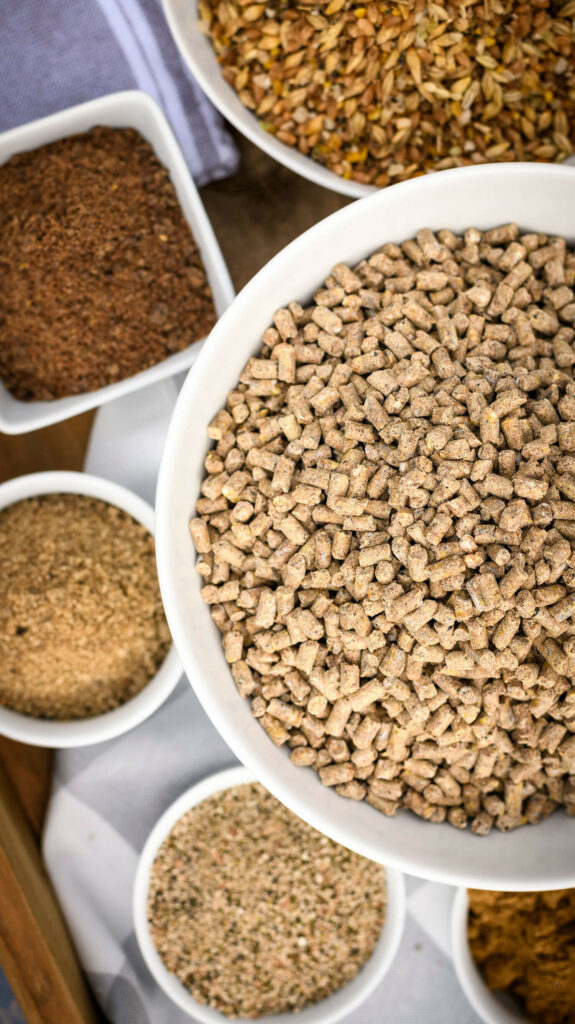When it comes to keeping your chickens healthy, productive, and resilient, protein is one of the most important parts of their diet.
Whether you raise layers, broilers, or a backyard flock of mixed ages and breeds, understanding the role of high protein chicken feed can make all the difference.
In this guide, we’ll walk you through everything you need to know. From when to choose a high protein formula, to what ingredients to look for, and which high protein treats can give your flock an extra boost.
What Is High Protein Chicken Feed?
High protein chicken feed is any poultry feed that contains a higher-than-standard percentage of crude protein, more than 16%.
Protein plays a central role in feather growth, egg production, tissue development, and immune support. It’s especially important during periods of stress, growth, recovery, or seasonal changes.
High Protein Feed and Typical Protein Levels
“Crude protein” is a term used on feed labels to describe the total protein content derived from both plant and animal sources.
Here’s a breakdown of typical protein levels in standard chicken feeds:
- Starter Feed (Chicks): 18–20%
- Grower Feed (Pullets): 16–18%
- Layer Feed: 16–18%
- Broiler Feed: 20–24%
When Do Chickens Need High Protein?
Your chickens may need high protein feed during:
- Molting, when feathers are shed and regrown
- Peak egg production, requiring more protein for yolk and albumen development
- Growth stages, such as the first few months of life
- Recovery from illness, injury, or stress
- Cold weather, when chickens burn more calories to stay warm
How High Protein Differs From Regular Chicken Feed
High protein formulas differ in both ingredients and nutrient density.
Expect to see:
- More legumes, like field peas
- Animal-based proteins, such as fish meal or dried insects
- Fewer low-nutrient fillers
Why Protein Matters in a Chicken’s Diet
Role of Protein in Egg Laying and Growth
Protein is critical for:
- Egg production (yolk and albumen are protein-rich)
- Feather quality and regrowth
- Muscle development
- Immune function
Without enough protein, chickens may struggle to lay regularly, molt poorly, or appear lethargic.
Signs of Protein Deficiency in Chickens
Look for these symptoms:
- 🪶 Feather loss or delayed molt
- 💤 Lethargy and inactivity
- 🥚 Fewer or lower-quality eggs
- 🐥 Stunted growth in chicks
Protein Needs by Chicken Age and Purpose
| Life Stage | Purpose | Ideal Protein Percentage |
| Chicks | Growth | 18-20% |
| Pullets | Development | 16-18% |
| Layers | Egg production | 16-18% |
| Broilers | Meat birds | 20-24% |
Best High Protein Ingredients to Look For
Natural Animal-Based Protein Sources
- Dried mealworms (50%+ protein)
- Fish meal (60–72%)
- Eggs (13%)
- Meat scraps (varies)
Animal-based proteins are more digestible and provide complete amino acid profiles.
Plant-Based High Protein Ingredients
- Field peas (20–25%)
- Sunflower seeds (25–30%)
These options are excellent for vegetarian or organic feed formulations.
Pros and Cons of Each Protein Source
| Source | Pros | Cons |
| Animal-based | Complete protein, digestible | Costly, harder to source |
| Plant-based | Widely available, affordable | May lack certain amino acids |
High Protein Feed for Laying Hens vs Broilers
Protein Requirements for Egg Layers
Laying hens need 16–18% protein, but may benefit from the higher end of that range during molting, cold weather, or peak laying.
Protein Requirements for Broilers and Meat Birds
Broilers thrive on 20–24% protein, particularly in their first 6–8 weeks when growth is most rapid.
Feed Formulations for Each Bird Type
- Pellets: Reduces waste and easy to feed
- Crumbles: Smaller pieces, can be great for younger birds or a preference for a mature flock.
- Whole grain mash: Encourages foraging behavior, you can see every individual wholesome ingredient. Also ideal for fermenting to boost nutrition and save costs.
Layers vs Broilers
| Bird Type | Protein Percentage | Common Feed Form | Feeding Duration |
| Layers | 16–18% | Pellets, crumbles, mash | Lifelong |
| Broilers | 20–24% | Mash | 6–12 weeks |
How to Choose a Commercial High Protein Chicken Feed
How to Read Chicken Feed Labels
Check for:
- Crude protein percentage
- Ingredient list (first 3 items are most abundant)
- Any additives, fillers or middlings
Certifications to Look For
- USDA Organic
- Non-GMO Project Verified
- Soy-free or corn-free options
- Animal welfare certified
Why Making Your Own Chicken Feed Isn’t Always a Good Idea
While it might seem like a cost-effective or customizable option, making your own high protein chicken feed can easily do more harm than good.
Without expert knowledge and precise balancing, you risk serious nutritional deficiencies, ingredient inconsistencies, and long-term health issues in your flock.
The Hidden Risks of DIY Feed
- Nutritional imbalances can lead to poor egg production, stunted growth, or illness.
- Overdoing protein can strain kidneys and cause excess ammonia in the coop.
- Calcium and phosphorus levels are easy to get wrong, which can affect shell strength and bone health.
It Takes More Than a Recipe
Even the best DIY recipe isn’t one-size-fits-all—and that’s why we don’t leave anything to chance. At Scratch and Peck, every ingredient in our high protein feeds is carefully vetted for quality, digestibility, and nutritional value.
We work closely with poultry nutritionists, veterinarians, and animal science specialists to ensure that each formulation supports your flock’s unique needs at every life stage.
Your birds deserve more than a rough estimate. Our feeds are thoughtfully crafted to help them lay better, grow stronger, and live healthier—naturally.
Unless you have the time, resources, and expertise to monitor your birds closely and tweak the mix often, buying a high-quality, professionally formulated feed is usually the safer—and smarter—choice.
When to Increase Protein in Your Chickens’ Diet
Seasonal and Situational Triggers
- Fall molt
- Cold weather
- Stress or illness recovery
- Early egg-laying stages
How to Safely Transition to High Protein Feed
- Start with a 25%/75% mix (new to old feed)
- Gradually increase over 7–10 days
- Monitor droppings and behavior
Temporary vs. Permanent Protein Boosts
Use high-protein treats like mealworms temporarily, or switch to a higher protein feed permanently if conditions demand.
How Often to Adjust Protein Intake
- Monthly for meat birds
- Seasonally for layers
- As needed based on flock health
FAQs About High Protein Chicken Feed
What Protein Percentage Is Best for Laying Hens?
Aim for 16–18%, bumping up to 18% during high-production or stressful seasons.
Can Too Much Protein Harm Chickens?
Yes. High protein over time can lead to:
- Kidney strain
- Ammonia buildup in litter
- Dehydration
Are Mealworms Safe for Daily Feeding?
Yes—in moderation. 1–2 tablespoons per hen per day is a good rule of thumb.
Should Chicks Eat High Protein Feed?
Yes. Chicks need 18–20% protein in their first 6–8 weeks.
How to Store High Protein Feed to Keep It Fresh
- Store in airtight containers
- Keep in a cool, dry location
- Avoid exposure to moisture or pests
- Rotate feed (first in, first out)
Ready to try high protein chicken feed? Check out Scratch and Peck’s 18% Organic Layer Pellets and give your flock the boost they need to thrive.
